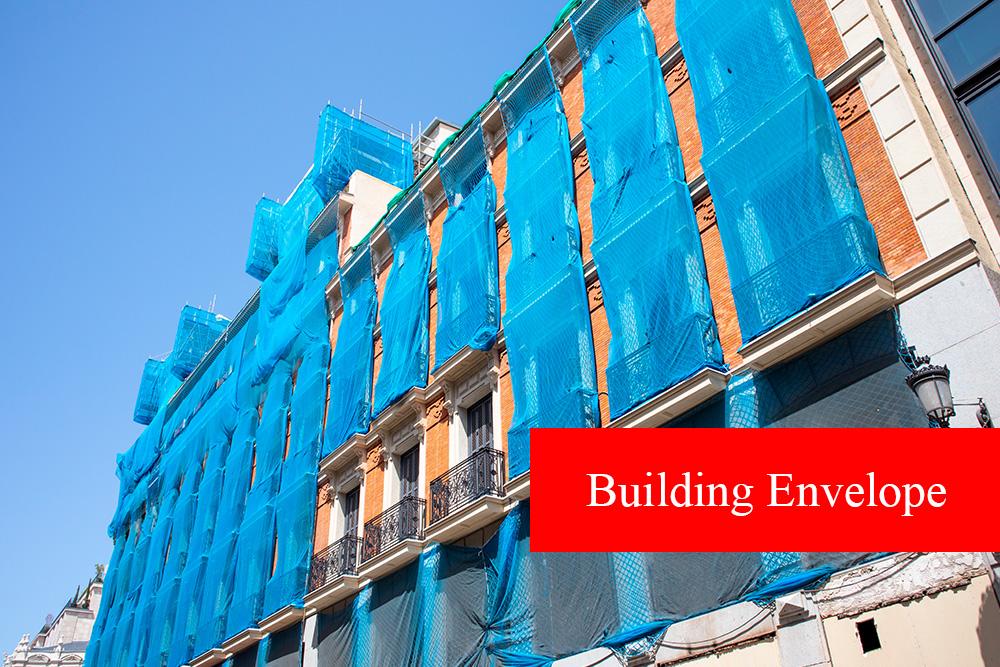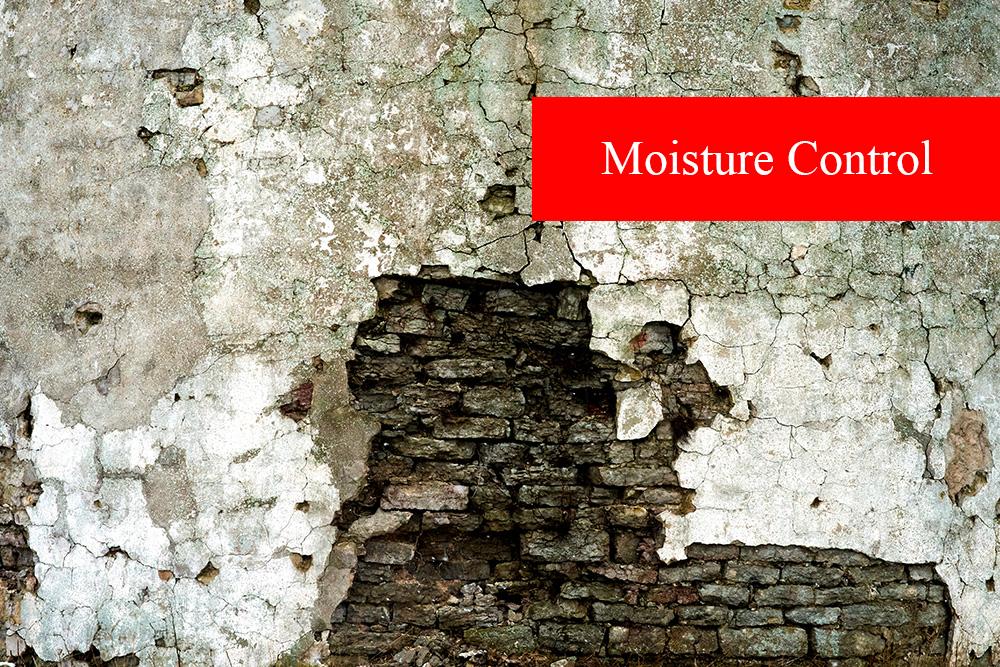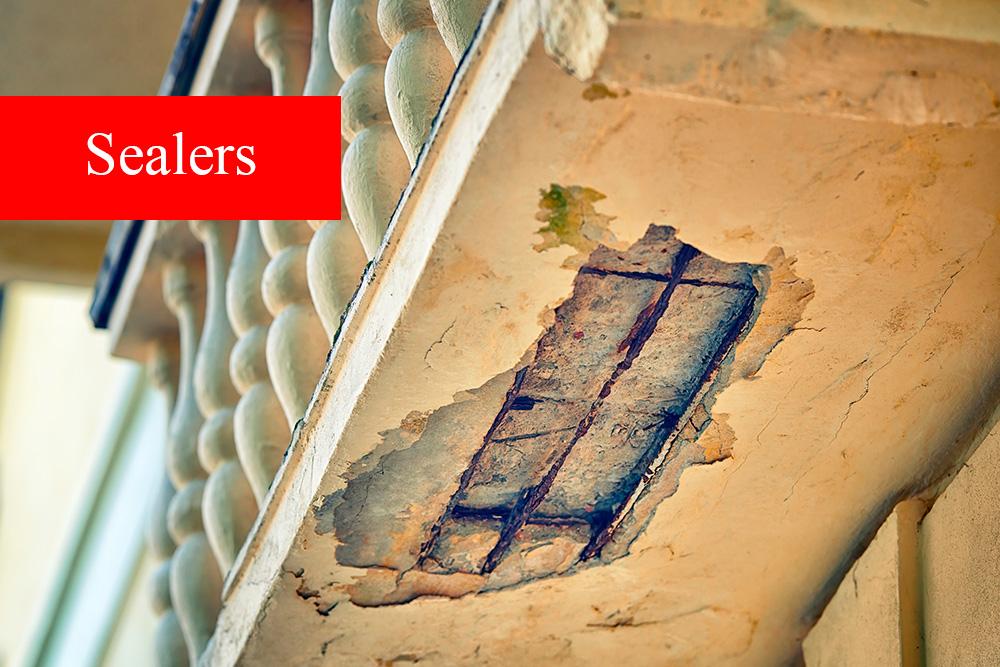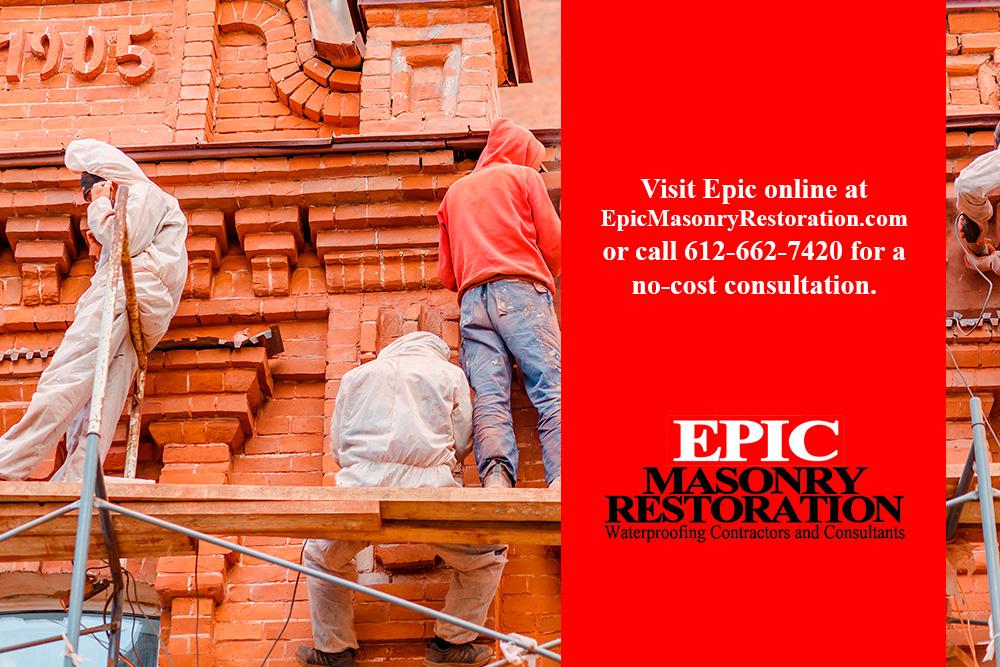As solid a building material as masonry is, brick, stone, and concrete structures require regular maintenance to maintain their visual appeal and structural integrity. The twin pillars of the degradation of any object over time are oxygen and moisture. While it is important to address the oxidative process, moisture is the true culprit when it comes to masonry damage.
Moisture affects building structure in two ways, through processes known as “washing out” and “thermal jacking” with both being the result of the long-term effects of water infiltration. Washing out refers to the deterioration of the lime used in historic mortar due to moisture infiltration. While washing out can be repaired by tuckpointing brick, thermal jacking is a more serious problem. When moisture seeps into the walls, it collects in low spots in the joints and core. It then expands when it freezes, pushing on the bricks and stones and causing the walls to “jack,” or jut outward. This will cause the walls to collapse if not properly repaired. Both washing out and thermal jacking can be reduced or eliminated by regular inspections for signs of water infiltration in the mortar joints.
Significant amounts of precipitation come from extreme weather events such as hurricanes, monsoons, and blizzards. Often the immediate damage is inconspicuous as the excessive precipitation caused by these events results in moisture accumulating unseen inside the building. However, it is crucial to understand that moisture infiltration is not just the result of rain and snow. In locations where the humidity levels are high, like the deep south or east coast areas, brick and mortar will take on the moisture in the air through osmosis.
High relative humidity of 60 percent and above is a leading cause of fungi growing uncontrollably. These hot damp environments are the perfect breeding ground for mold and mildew contamination that can stain the exterior of the building. However, controlling moisture does more than just protect the building. In addition to the property damage, moisture lurking about can also be detrimental to the occupants of a building over time. Berkeley Lab estimated the annual asthma-related medical costs attributable to just mold amount to over $3 billion annually in the U.S. alone.
Building Envelope

Diagnosing and solving moisture problems must always start with a thorough inspection of the building envelope, looking for signs of visible moisture. Leaking roofs, flashing, chimneys, skylights, windows, gutters, unsealed holes around conduits, and piping through exterior walls all provide a place for moisture to enter the building. Inside, water-damaged walls and ceilings are an obvious indicator of moisture, and any of these issues must be addressed to prevent further damage.
Most commercial buildings should be positively pressurized to 110 inches of water column pressure to minimize moisture infiltration. However, negatively pressurized buildings are prime candidates for moisture infiltration. This is often the cause of moisture buildup if outdoor air intakes have been closed, as this can restrict or even eliminate the return air needed for the building’s ventilation system.
While commercial tuckpointing of masonry to repair washed-out mortar joints can be expensive, the cost is nothing next to having to replace a collapsed wall. Stone repair may also involve other issues that will significantly add to the repair expenses, such as having to shut down operations while repairs are effected.
Moisture Control

Moisture penetrating the building envelope is the biggest issue in water damage and microbial growth. Moisture trapped in the roof and/or walls dramatically reduces the insulative properties of materials and facilitates the breakdown of building components. To prevent this from happening, air vents and weep holes are used as the first line of defense against water infiltration. Weep holes are open spaces left in the mortar between bricks or stones at regular intervals to allow moisture to escape. Weep holes are intentionally placed along the bed joint to allow for drainage at the lowest points. Air vents allow air to circulate and pull moisture away from the walls.
Heating and Cooling Systems
HVAC units must be examined to ensure the system is not causing or allowing moisture infiltration. Often, the HVAC preheat and reheat cycles and cooling functions can cause moisture to accumulate in the spaces the system uses, such as ducts, air vents, and/or the air handling unit. A good starting point for an HVAC system inspection is obtaining the system installation drawings. These should be reasonably easy to obtain for a commercial building as most municipalities will require plans for any new installation. The drawings should give an accurate picture of the installation and the spaces the system occupies. Once this has been accomplished, a thorough inspection of all accessible components should be performed.
Condensation
Condensation is generated when warm air comes into contact with a surface that is enough cooler than the surrounding air to cause the moisture vapor in the air to cool down enough to transform into its liquid state, meaning water. In hot and humid climates, excess moisture buildup can be prevented with building envelope components that have adequate moisture and thermal resistance properties. Walls built of brick and stone masonry, as well as stucco, provide lower resistance to moisture infiltration and migration when compared to non-porous materials like metal and plastics. Additionally, breathable coatings can be applied to allow air to penetrate the structure but prevent moisture infiltration.
Sealers

There are many sources of moisture, but not all are visible. While precipitation is one of the most significant contributors to moisture intrusion that leads to the need for brick, stone, and concrete repair, many of the driest climates in the western U.S. are known to have some of the worse moisture problems. This is because many areas have water tables just below the surface, and those water tables are continually in a state of flux. This means that a building in the desert can be in just as much danger from water damage as one in a sub-tropical location. This is why knowing what type of sealer to use is imperative to preserving building integrity.
Using a non-breathable sealer on a porous surface, like brick, stone, concrete, or mortar, can result in the masonry deteriorating from the inside out by trapping moisture within the pores and eventually causing the coating to fail as well. However, breathable sealers prevent moisture infiltration while allowing air to move freely throughout the structure. This prevents water damage by keeping water out and allowing any moisture trapped inside the building to escape. By nature, penetrating sealers are all breathable because the sealer works its way into the pores of the material so it cannot sit on the surface and form a film.
Moisture control in masonry buildings is a critical concern, particularly in historic buildings that use older materials. This is because older materials are less effective at handling weather as compared to newer formula bricks and mortar. Because it is critical to use a suitable sealer for the correct application, applying masonry sealers is best left to an experienced masonry stone repair company. Epic Masonry Restoration has years of experience in providing all types of commercial masonry services, including tuckpointing brick, stone repair, and brick repair in the Minneapolis and St. Paul area. Their trained technicians will help you maintain the integrity of your building by ensuring only the right materials and best practices are used. Visit Epic online at EpicMasonryRestoration.com or call 612-662-7420 for a no-cost consultation.

